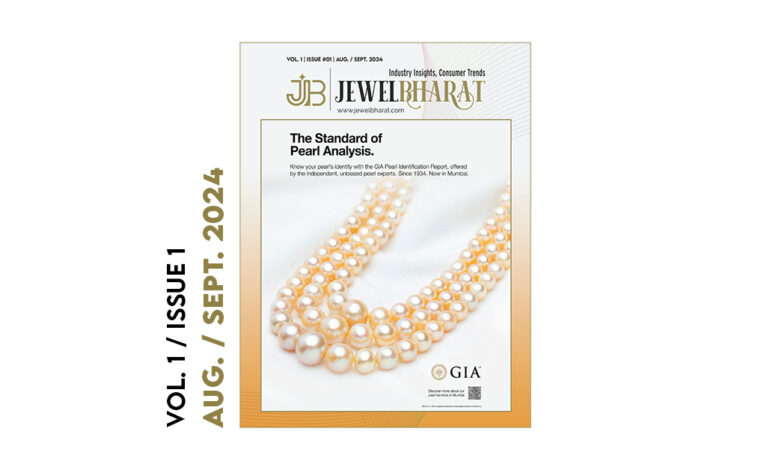Emerald: The World’s Most Enchanting Green Gemstone
- By Jewel News Desk
- August 26, 2024

Emeralds are renowned as the most famous green gemstones. With its rich, verdant hue, the emerald has enchanted people for thousands of years and inspiring gemstone enthusiasts across generations.
The Evolution of a Name
The emerald’s name has a story of its own. It is derived from the Greek word smaragdos, which referred to a range of green stones. Over time, this term evolved into the modern “emerald,” while the name “Esmeralda” also carries the same green essence. This evolution reflects the timeless and evolving nature of this gem’s appeal.
The History of Emeralds
Emeralds were mined in Egypt as early as 330 BC, with some estimates suggesting that the oldest emeralds are around 2.97 billion years old. Cleopatra is one of the most famous historical figures associated with emeralds; she famously claimed ownership of all emerald mines in Egypt during her reign. The Egyptians valued emeralds for their use in jewelry and elaborate burials, often placing them with monarchs as symbols of protection.
Emeralds in Modern Times
Owning an emerald means possessing a piece of history, nature, and art, with each stone being unique. The most endearing characteristic of an emerald is its individuality. Treat your emerald as a personal work of art—appreciate its distinct features and recognize its beauty. After all, beauty is in the eye of the beholder.
Expert Insights
 In this edition of Expert Insights, we had the pleasure of speaking with Janki Choksi, Founder of Janki Choksi Designs. With 25 years of experience working with high-value brands, corporates, jewellers, and manufacturers, Janki offers a wealth of knowledge on the latest trends, the care of emerald jewelry, and much more. Her exclusive masterpieces and fine jewelry expertise make her insights invaluable for enthusiasts.
In this edition of Expert Insights, we had the pleasure of speaking with Janki Choksi, Founder of Janki Choksi Designs. With 25 years of experience working with high-value brands, corporates, jewellers, and manufacturers, Janki offers a wealth of knowledge on the latest trends, the care of emerald jewelry, and much more. Her exclusive masterpieces and fine jewelry expertise make her insights invaluable for enthusiasts.
Design choices for the collection significantly depend on the type and theme one aims to create. When it comes to emeralds, the most popular and readily available cuts are emerald cuts, ovals, and pears. Drawing an experience from over 25 years in the jewellery industry, I’ve witnessed how emeralds captivate both seasoned collectors and newcomers. Choosing the perfect emerald involves understanding its unique properties and ensuring proper care to maintain its timeless beauty.
The Four Cs: Key Criteria for Choosing Your Emerald
- Cut: The cut of an emerald is crucial as it determines how the stone reflects light. The traditional emerald cut, which is rectangular with beveled corners, is designed to highlight the stone’s color and brilliance. Other popular shapes include oval, pear, and cushion cuts. When choosing a cut, consider how it will complement the stone’s color and clarity, as well as the intended setting of the jewelry.
- Color: Emeralds are most valued for their color. The finest emeralds exhibit a deep, rich green hue with a hint of blue. This vibrant color is the most prized and indicates a high-quality stone. Avoid emeralds with brown or yellowish tints, as these are less desirable. The intensity and saturation of the green color play a significant role in the emerald’s overall value and appeal.
-
Clarity: Clarity refers to the presence of inclusions, which are natural imperfections within the stone. Emeralds typically have inclusions, known as jardin, which can give the stone a unique character. While some inclusions are acceptable and even add to the stone’s personality, too many or very noticeable inclusions can reduce the emerald’s value. It’s essential to find a balance, selecting an emerald with inclusions that do not significantly impact its beauty or durability.
4. Carat Weight: Carat weight measures the size of the emerald. Larger emeralds are generally more valuable due to their rarity. However, the value of an emerald is not solely determined by its size. An emerald’s overall quality depends on a combination of factors: color, clarity, and cut. A larger stone with poor color or clarity may be less valuable than a smaller, higher-quality emerald.
When it comes to setting choices, it’s important to consider both functionality and aesthetics, especially for daily wear and astrological purposes. For astrological purposes and daily wear, I highly recommend the bezel setting. This setting encases the stone in a metal rim that protects it from all sides, making it ideal for emeralds, which are relatively soft and can easily break or chip if hit during your daily activities.
On the other hand, if you’re looking to showcase the emerald’s beauty and maximize its visual impact, the prong setting is an excellent choice. Prong settings hold the stone with metal claws, allowing more light to pass through and enhancing its brilliance. This setting offers a more open view of the stone, making it a favorite from a design perspective. However, it’s worth noting that prong settings might require more careful handling to protect the stone from potential impacts.
Ultimately, your choice should balance practicality and aesthetic appeal based on how you plan to wear and enjoy your emerald jewelry.
Choosing the Perfect Setting: Protect and Showcase Your Emerald
- Bezel Setting: Surrounds the emerald with a metal rim, offering robust protection and making it suitable for daily wear. Emeralds are among the softest stones and can break easily if hit.
- Prong Setting: This allows more light to enter the emerald, enhancing its sparkle and showing the maximum view of the stone. Ensure prongs are securely crafted to prevent the stone from becoming loose.
- Halo: Features a ring of smaller diamonds or gemstones around the emerald, accentuating its size and brilliance.
Consumer preferences in jewellery are constantly evolving, and a notable trend we’ve recently observed is the preference for striking oversized emeralds. For instance, at the recent Ambani wedding, the trend was clear: everyone favored large, eye-catching emerald pieces in diamond and polki jewellery.
This trend highlights a growing inclination towards bold, dramatic jewellery statements. Emerald jewellery with complementary gold tones is particularly in high demand, adding a touch of classic elegance to the vibrant green stones.
Additionally, the use of green rhodium on gold along with emeralds is gaining traction. This innovative combination adds a contemporary twist to traditional gold jewellery. The green rhodium finish imparts a unique hue to gold, aligning with modern aesthetics while retaining its luxurious essence.
Another stylish option is emerald pieces with ceramic-plated prongs, which offer a distinctive and modern look.
Design preferences also differ across regions. In northern regions, for example, there’s a penchant for intricate and bold designs that reflect rich cultural heritage and traditional craftsmanship. This regional variation underscores how jewellery trends can be influenced by local tastes and traditions.
Emeralds are beautiful and valuable gemstones that require special care to maintain their luster and prevent damage. Here are some essential tips for the maintenance and cleaning of your emerald jewelry:
- Avoid Perfume: Never apply perfume, lotions, or hairspray after putting on your emerald jewelry. The chemicals in these products can damage the stone’s surface and alter its color.
- Temperature Sensitivity: Emeralds are sensitive to high temperatures and sudden temperature changes. Exposure to heat can cause inclusions within the stone to expand, potentially leading to cracks. Always keep your emeralds away from heat sources and direct sunlight for extended periods
- Remove Before Showering: Do not wear your emerald jewelry while showering. Water, soap, and shampoo can leave a residue on the stone, making it look dull. Moreover, the chemicals in soap can weaken the stone and its setting over time.
- Gentle Cleaning: Clean your emerald jewelry with a soft, dry cloth. A microfiber cloth is ideal as it removes oils and fingerprints without scratching the gemstone. For deeper cleaning, use a soft toothbrush and mild soapy water, but ensure you rinse thoroughly and dry the emerald immediately
- Avoid Harsh Chemicals: Never use harsh chemicals or abrasive materials to clean your emeralds. Household cleaners, bleach, and abrasive products can scratch the stone and damage its setting. Stick to mild soap and water for safe cleaning.
- Professional Cleaning: Regular professional cleaning is generally recommended. A professional jeweler has the expertise to clean your emeralds safely and can check for any issues such as loose stones or damaged settings.
- Proper Storage: Store your emerald jewelry in a proper jewelry box with individual compartments or soft cloth pouches to prevent scratching. Avoid wrapping and storing them in cotton, as fibers can snag on the prongs and settings, causing damage.
- Handling with Care: Always handle your emerald jewelry with care. Avoid pulling or tugging at chains and clasps, and take care when putting on and removing pieces to prevent unnecessary strain on the gemstone and its setting.
Emerald jewellery trends are evolving. Vintage-inspired designs with intricate metalwork are making a notable return, while minimalist designs that highlight the emerald’s natural beauty are gaining popularity.
Emeralds are more than just gemstones; they are timeless treasures that require thoughtful care. Understanding their unique characteristics and properly maintaining them ensures that your emerald remains a cherished piece for years to come.
Whether you opt for a classic or contemporary design, emeralds continue to embody sophistication and personal elegance.




